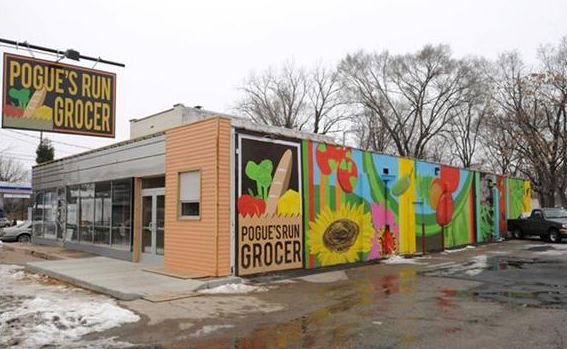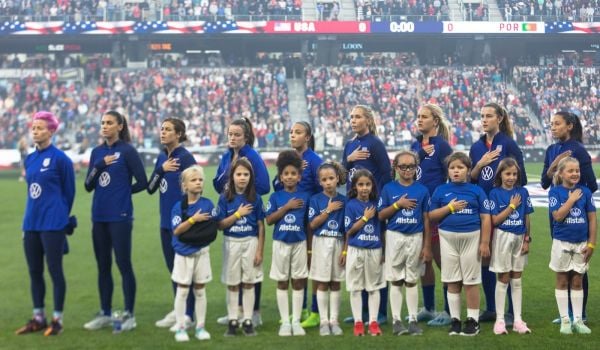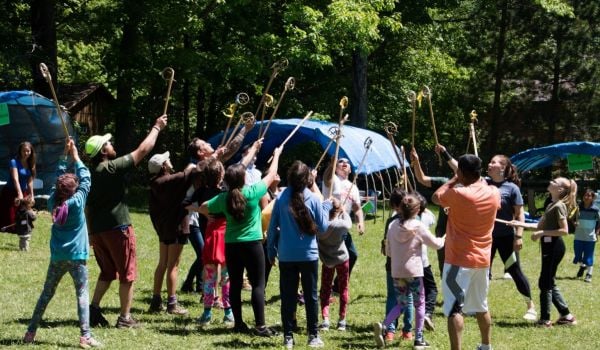Ann Marie Hanlon has lived in the Holy Cross neighborhood of the Near Eastside section of Indianapolis for close to 35 years. She still remembers the day bulldozers ripped homes from the earth at the corner of New York Street and Highland Avenue to make way for a new business.
For years, the roughly 20 neighborhoods comprising the Near Eastside have been buffeted by poverty, rising crime rates and numerous home foreclosures, a function of the shuttering of two manufacturing plants in the 1980s. The area’s foreclosure rate led the U.S. in 2004.
But today, when Hanlon looks along one strip of roadway running south from New York Street to Marlowe Avenue, she sees preparations being made for the construction of 16 new houses. Parents stroll with baby carriages to Highland Park. Young couples, new residents, shop at Pogue’s Run Grocer, a sorely needed and brand new grocery store.
“My heart skips a beat when I think about it,” she says.
Near Eastside has indeed had a productive few years. Over the last half-decade, investments totaling more than $150 million have helped erect new retail businesses, affordable housing, greenery projects, a community health center and the area’s only recreation center. It’s the result of two factors: A 2007 quality of life plan that outlined 150 specific objectives to improve this section of the city, and $1 million from the National Football League, a happy side effect of the successful bid Indianapolis placed in 2008 to host the 2012 Super Bowl.
Less famous than its commercials, touchdowns or snafus is the NFL’s annual tradition of awarding $1 million grants to the city that hosts the league’s most-watched game. Typically, these grants have come in the form of community centers (what the league calls “youth education towns”), provided each host city puts up $1 million in matching funds. It’s a stamp the league can leave behind in Super Bowl cities where, far too often, economic activity generated by football’s biggest game benefits stadium concession stands and local hotels more than it does residents who must contend with a flood of tourists and beer-guzzling fans.
Lately, however, these investments have taken a different tack. Instead of putting its cash toward a one-off legacy project, the NFL is opting to work with cities that have a plan to leverage the money for a project that will have a larger impact. And increasingly, the investments are being targeted for neighborhoods in need.
In New Orleans, the most recent Super Bowl host city, the Recreation Development Commission is using the NFL cash to complete several different public recreation centers. These will get built in collaboration with other corporate donors, including Chevron Oil, which put $5 million toward a new recreation center in the city’s East Riverside neighborhood. One of the projects, Harrell Stadium, will reuse the turf field on which the Baltimore Ravens eked out a win against the San Francisco 49ers.
But while New Orleans is the most recent beneficiary, Indianapolis’ New Eastside provides the best example of how the NFL’s new model could work. There, the investment catalyzed development of a much larger scope.
“The whole idea of the legacy initiative … was to have something that was actually tangibly and significantly beneficial to the city long after the Super Bowl was here,” says Bill Taft, executive director of LISC Indianapolis. The local arm of the national community development non-profit, Indy’s LISC supported some 600 Near Eastside residents as they assembled the quality-of-life plan that was used to inform the legacy initiative.
Tucking the Near Eastside’s redevelopment plan into a citywide Super Bowl bid was a last-minute idea, the product of a quickly scheduled meeting between Taft and Mark Miles, who was leading the city’s Super Bowl bid committee. “When I threw out the suggestion of leveraging the $1 million into rehabbing an entire neighborhood,” Taft recalls, “I could only think about how it just might dramatically accomplish the neighborhood’s goals.”
At that point, LISC had already invested $30 million over the last two decades in the Near Eastside as part of its mission to revive more than 100 low-income neighborhoods across the country. But there was more work to be done.
In the four years leading up to Indianapolis’ Super Bowl debut, that pairing produced results, as the city’s Near Eastside was transformed. You can see changes all across the area — redone homes, new sidewalks, bike paths, trees. There are sculptures and signs letting people know when they enter once-neglected neighborhoods. A new health center and affordable apartments keep formerly desolate 10th Street busy. And the shining jewel: The Chase Legacy Center on the campus of Arsenal Technical High School — where the $2 million in NFL money and matching funding went — a 27,000-square-foot facility that opened a day before the 2012 Super Bowl and is equipped with a public fitness center, mobile computer lab, outdoor greenhouses and more.
“Having the Super Bowl really gave us a sense of urgency that you really don’t have in these kinds of projects,” says James Taylor, an Indianapolis resident since 1987 and executive director for almost 15 years at the John H. Boner Center on 10th Street.
In a way, the Super Bowl became the carrot that Near Eastside neighborhood associations and people like Taylor could use to attract more investment — from the Lilly Endowment, from the United Way, from Chase bank (whose investment in the legacy center was large enough to buy it the naming rights) — toward the quality of life projects Near Eastsiders had embarked on before their work was tied up in a Super Bowl bid.
Therein seems to lie the direct benefit of hosting a Super Bowl, even if its economic impact otherwise remains in doubt for cities.
“Pretty much everything that happened with the legacy initiative could’ve happened without the Super Bowl being here,” Taft says. “But there wouldn’t have been the same priority for civic leadership in the city supporting neighborhood revitalization if it hadn’t been connected to the Super Bowl.”
While work remains, as the Boner Center’s Taylor will tell you, at least much of the groundwork for improving a once-flailing section of Indianapolis has been laid.
“But now,” he says, “we have a renewed sense of optimism and a can-do attitude that we’re going to continue this work for as long as it takes.”

















